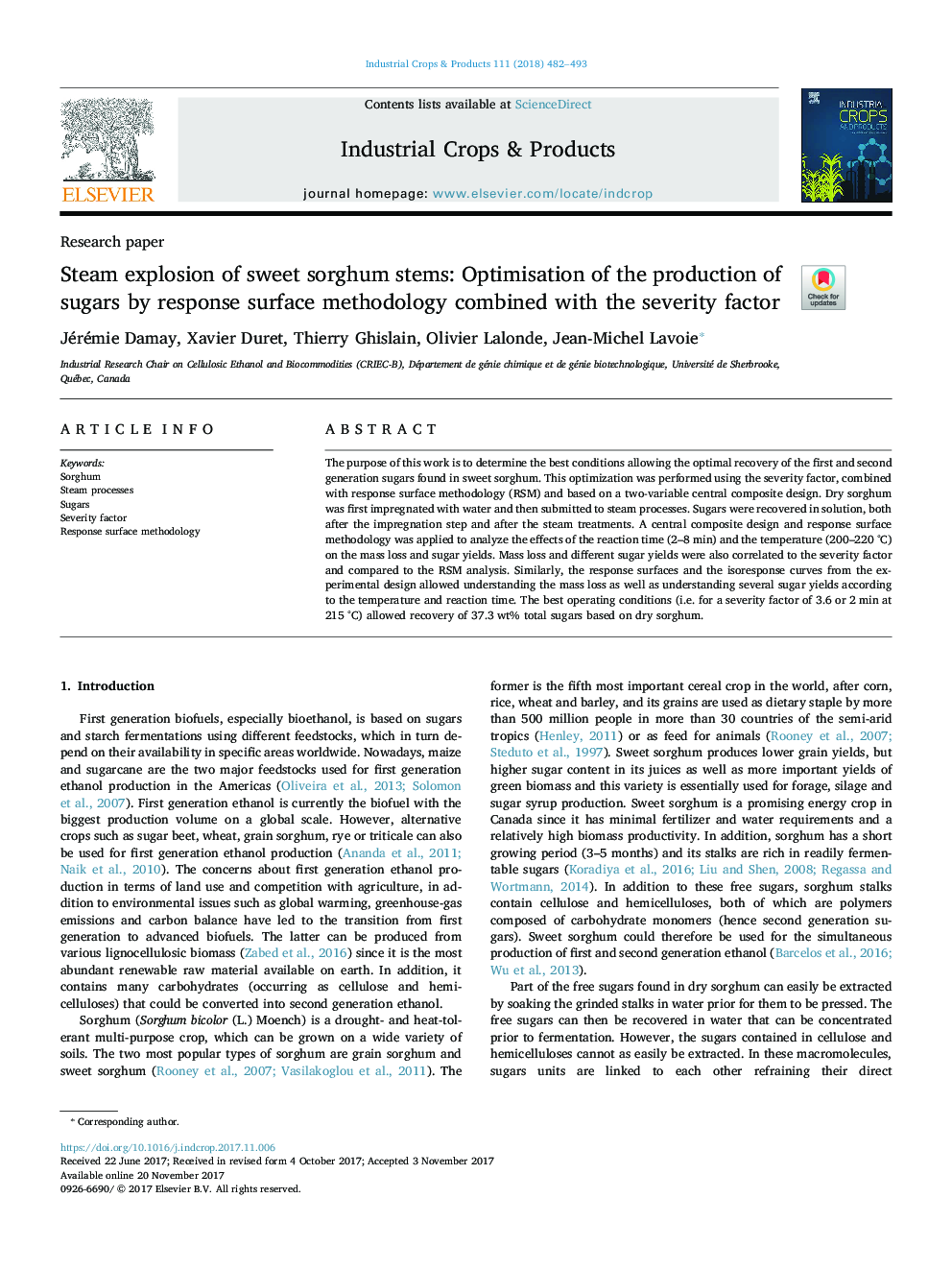| Article ID | Journal | Published Year | Pages | File Type |
|---|---|---|---|---|
| 8880948 | Industrial Crops and Products | 2018 | 12 Pages |
Abstract
The purpose of this work is to determine the best conditions allowing the optimal recovery of the first and second generation sugars found in sweet sorghum. This optimization was performed using the severity factor, combined with response surface methodology (RSM) and based on a two-variable central composite design. Dry sorghum was first impregnated with water and then submitted to steam processes. Sugars were recovered in solution, both after the impregnation step and after the steam treatments. A central composite design and response surface methodology was applied to analyze the effects of the reaction time (2-8 min) and the temperature (200-220 °C) on the mass loss and sugar yields. Mass loss and different sugar yields were also correlated to the severity factor and compared to the RSM analysis. Similarly, the response surfaces and the isoresponse curves from the experimental design allowed understanding the mass loss as well as understanding several sugar yields according to the temperature and reaction time. The best operating conditions (i.e. for a severity factor of 3.6 or 2 min at 215 °C) allowed recovery of 37.3 wt% total sugars based on dry sorghum.
Related Topics
Life Sciences
Agricultural and Biological Sciences
Agronomy and Crop Science
Authors
Jérémie Damay, Xavier Duret, Thierry Ghislain, Olivier Lalonde, Jean-Michel Lavoie,
